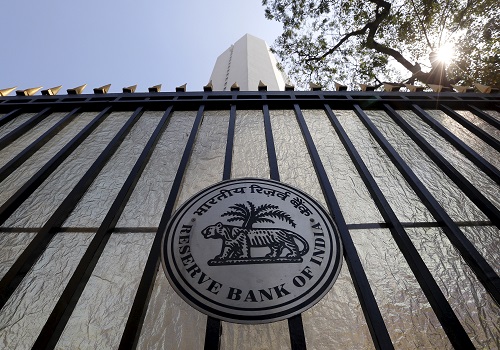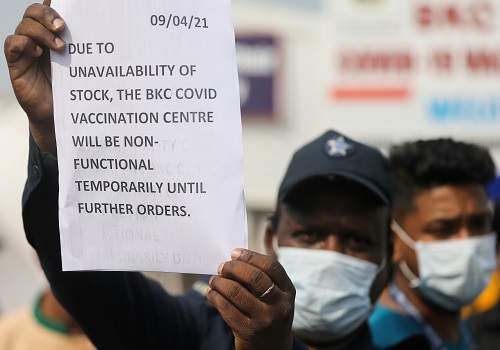Turmeric trading range for the day is 11912-13112 - Kedia Advisory

Follow us Now on Telegram ! Get daily 10 - 12 important updates on Business, Finance and Investment. Join our Telegram Channel
Gold
GGold faced a decline, settling at 62185, registering a -0.3% drop as the dollar maintained strength, and market participants awaited key U.S. economic data that could influence the Federal Reserve's rate outlook. The recent cautious remarks from Fed Chair Jerome Powell, coupled with weak data in the U.S. manufacturing sector, have increased the likelihood of an interest rate cut in March 2024. Powell acknowledged that the monetary policy is achieving its intended slowdown of the economy, with interest rates reaching appropriate tightening levels. However, he also left room for further policy tightening if necessary. In November, the U.S. manufacturing Purchasing Managers' Index (PMI), reported by the ISM Institute, remained at 46.7, marking the 13th consecutive month below the 50-point threshold, indicating contraction in the sector. This softness in manufacturing has fueled expectations of a potential interest rate cut. The odds of a U.S. interest rate hike at the December Fed meeting dwindled to just 2.5%. Conversely, the probability of an interest rate cut by March surged to 64%, with odds for a cut in May soaring to 90%. Gold holdings at the SPDR Gold Trust rose by 2.3 tonnes, reaching a total of 881.12 tonnes, the highest level since November 22. From a technical perspective, the gold market is experiencing long liquidation, evidenced by a drop in open interest by -3.63% to settle at 16554 contracts. The current support level is at 61815, and a breach below could lead to a test of 61435. On the upside, resistance is anticipated at 62700, and a move above could propel prices to test 63205.
Trading Ideas:
* Gold trading range for the day is 61435-63205.
* Gold dropped as dollar held firm and investors awaited more U.S. economic data
* Fed Powell said that it's clear the monetary policy is slowing the economy down as expected, with interest rates reaching appropriate tightening levels
* Recent cautious remarks by Fed’s Powell, and weak data in the US manufacturing sector boosted the odds for an interest rate cut in March 2024.
Silver
Silver faced a decline, settling at 75279, marking a -1.17% drop as the dollar strengthened, despite some relief about the outlook for interest rates. Dovish comments from the European Central Bank's Isabel Schnabel, signaling a supportive monetary policy outlook, provided a boost to market sentiment. However, anxiety persisted ahead of key events, including the U.S. non-farm payrolls data and China's trade data. Geopolitical tensions in the Middle East contributed to safe-haven buying, supporting silver prices. Federal Reserve Chair Jerome Powell reiterated the central bank's readiness to tighten policy further if necessary. Despite this, traders seemed convinced that the rate-hike cycle had concluded, with a 70% chance of a rate cut by the U.S. central bank by March 2024, according to CME's FedWatch Tool. Concerns about the supply of industrial silver, coupled with robust demand, also played a role in lifting prices. The Silver Institute reported an expected 2% drop in global mined silver production in 2023, driven by lower output from key producers Mexico and Peru. Meanwhile, increased investment in solar panels, power grids, and 5G networks contributed to forecasts of an 8%-10% rise in silver demand. From a technical standpoint, the silver market is witnessing long liquidation, with a drop in open interest by -18.76% to settle at 15274 contracts. The current support level is at 74675, and a breach below could lead to a test of 74075. On the upside, resistance is anticipated at 76120, and a move above could propel prices to test 76965.
Trading Ideas:
* Silver trading range for the day is 74075-76965.
* Silver dropped as the dollar climbed higher despite easing concerns about the outlook for interest rates.
* Dovish comments by European Central Bank's Isabel Schnabel that hinted at a supportive monetary policy outlook buoyed sentiment.
* Meanwhile, safe have demand triggered by geopolitical tensions in the Middle East supported safe haven buying.
Crude oil
Crude oil prices experienced a decline, settling down by -1.25% at 6080, primarily driven by concerns regarding the effectiveness of OPEC+ supply cuts and apprehensions about weakening energy demand amidst softening economic data in major economies. The market exhibited caution despite several OPEC+ members, including Saudi Arabia, UAE, and Kuwait, announcing additional cuts totaling 2.2 million barrels per day last week. However, a substantial portion of the cuts, over 1.3 million bpd, represented an extension of voluntary reductions by Saudi Arabia and Russia. The Kremlin mentioned that the agreed cuts would take some time to take effect, contributing to market uncertainties. Despite Saudi Arabia suggesting potential ongoing cuts beyond the first quarter, traders remained uneasy about rising geopolitical tensions in the Middle East due to an escalation in fighting in Gaza. On the demand side, concerns heightened due to weaker-than-expected manufacturing activity in the U.S. and China, two of the world's largest oil consumers, leading to fears of softer energy demand. Additionally, U.S. crude production in September reached a new monthly record of 13.24 million barrels per day, with a significant increase in North Dakota, a key shale-producing region. The data indicated a 1.7% rise in crude output, the largest increase since March. Technically, the market is under fresh selling pressure, with a 7.58% gain in open interest to settle at 13,592 contracts. Crude oil is currently finding support at 6019, with a potential test of 5957. On the upside, resistance is likely at 6168, and a move above could see prices testing 6255.
Trading Ideas:
* Crudeoil trading range for the day is 5957-6255.
* Crude oil fell driven by doubts about the effectiveness of OPEC+ supply cuts
* Pressure also seen on concerns about weakening energy demand due to softening data in major economies.
* The market remains cautious despite Saudi Arabia's suggestion of potential ongoing cuts beyond the first quarter.
Natural gas
Natural gas prices recorded a gain of 1.83%, settling at 228, driven by revised weather forecasts indicating colder temperatures and higher heating demand. The outlook for the upcoming week suggests a shift from warmer-than-normal conditions to near-normal temperatures, followed by another warm period. This change in weather expectations contributed to the upward movement in natural gas prices. Despite the recent price increase, near-record U.S. gas output and high storage levels have provided a buffer for meeting heating demand. Average gas output in the Lower 48 U.S. states slightly decreased in December, falling from a record 107.8 billion cubic feet per day (bcfd) in November to 107.6 bcfd. Daily output is anticipated to drop further, reaching a preliminary four-week low of 106.1 bcfd. Meteorological projections highlight the dynamic weather conditions, with a potential return to warmer-than-normal temperatures from December 17-20. U.S. gas production reached a seasonal high of 3,126 bcf in September, but signs indicate a deceleration in production growth due to low prices. From a technical perspective, the natural gas market is experiencing short-covering, with a decline in open interest by -11.46% to settle at 38146 contracts. Support for natural gas is identified at 223.8, and a breach below could lead to a test of 219.7. On the upside, resistance is expected at 232.7, and a move above may push prices to test 237.5.
Trading Ideas:
* Naturalgas trading range for the day is 219.7-237.5.
* Natural gas climbed on forecasts for colder weather and higher heating demand next week than previously expected
* Support also seen as record amounts of gas flowed to U.S. liquefied natural gas (LNG) export plants.
* That price increase came despite near record U.S. output that has allowed utilities to leave more gas in storage to meet heating demand
Copper
Copper faced a 1% decline, settling at 713, driven by concerns over rising inventories at the London Metals Exchange (LME), reaching 174,900 tonnes—a 225% increase since July. Mixed factory data from China in November added uncertainty about demand. Disruptions in Panama, with First Quantum suspending operations, supported copper prices, affecting 1% of global supplies. Moody's negative outlook on China's credit rating, citing economic risks and property sector restructuring, influenced market sentiments. Chile's Codelco reported a 5.7% YoY production drop in October. The global refined copper market shifted from a deficit of 21,000 metric tons in August to a 55,000 metric tons deficit in September, according to the International Copper Study Group (ICSG). The disruptions in Panama and the decline in Chilean production contributed to the market's delicate balance. Despite a global surplus of 17,000 metric tons in the first 9 months of the year, adjusted figures for September showed a deficit, emphasizing the nuanced nature of copper dynamics. Technically, the market observed fresh selling, with open interest gaining by 11.93% to settle at 5563, while prices dropped by -7.2 rupees. Copper's support lies at 709.7, potentially testing 706.4 levels. Resistance is anticipated at 718.4, and a breakthrough could lead to testing at 723.8.
Trading Ideas:
* Copper trading range for the day is 718.6-731.
* Copper gains amid supply concerns and expectations of rising demand.
* Copper inventories in warehouses monitored by the Shanghai Futures Exchange fell 27%
* Daily on-warrant stocks in the LME-registered warehouses eased to the lowest since September after fresh cancellations of warrants.
Zinc
Zinc experienced a 2.13% decline, settling at 220.5, following Moody's shift in China's credit rating outlook to "negative." The downgrade was attributed to concerns about surging local government debt and the deepening property crisis in the world's second-largest economy. LME warehouse zinc inventories reached a more-than-two-year high at 226,250 by November's end, reflecting subdued economic activity. Global zinc markets shifted to a deficit of 15,400 metric tons in September, contrasting with a surplus of 28,000 tons in August, as per ILZSG data. The first nine months of 2023 saw a global surplus of 475,000 tons, a substantial increase from last year. Oversupply concerns intensified as zinc inventories in LME-approved warehouses more than tripled in a week, signaling a two-year high. The economic downturn, particularly in Europe, impacted zinc prices as industrial manufacturing slumped. However, the decline was mitigated by optimism about China's economic recovery, supported by Beijing's stimulus measures and an unexpected increase in Caixin Manufacturing PMI in November. Technically, the market witnessed long liquidation, with open interest unchanged at 4132 (0% change). Prices dropped by -4.8 rupees. Zinc finds support at 218.7, with potential testing at 217 levels. Resistance is anticipated at 223.7, and a breakout could lead to testing at 227.
Trading Ideas:
* Zinc trading range for the day is 217-221.2.
* Zinc dropped after Moody's cut its outlook on China's credit ratings to negative from stable.
* LME warehouse zinc inventories surged to 226,250 at the end of November, hitting a more-than-two-year high
* The global zinc market swung to a deficit of 15,400 metric tons in September from a surplus of 28,000 tons in August
Aluminium
Aluminium faced a 0.82% decline, closing at 200.15, driven by cautious investor sentiment awaiting crucial economic data. A surprising expansion in Chinese manufacturing in November contradicted earlier official reports, influencing market dynamics. Moody's maintained China's credit rating at A1 but shifted the outlook to "negative," citing risks from sustained lower economic growth and ongoing property sector restructuring. The Caixin China General Service PMI for November hit 51.5, marking the 11th consecutive month of growth and the fastest expansion since August. Strong market conditions were reported, with new orders growing significantly, indicating improved domestic and overseas demand. Global primary aluminium output in October rose 3.9% YoY to 6.116 million tonnes, according to the International Aluminium Institute. Chinese data revealed a substantial increase in primary aluminium imports, up 173% YoY in January-October, leading to a 347.33% YoY surge in net imports. October saw a 221.19% YoY rise in imports and a 91.29% MoM decline in exports, resulting in a 223.4% YoY increase in net imports. Technically, the market experienced long liquidation, with open interest remaining unchanged at 4179, coupled with a 0% change. Prices dropped by -1.65 rupees. Support for Aluminium is identified at 199.4, potentially testing 198.7 levels. On the upside, resistance is anticipated at 201.2, with a breakout possibly leading to a test of 202.3.
Trading Ideas:
* Aluminium trading range for the day is 196.3-200.7.
* Aluminium dropped as investors cautiously awaited key economic data this week to guide the outlook further.
* A private survey showed that Chinese manufacturing activity unexpectedly expanded in November
* The Caixin China General Service PMI increased to 51.5 in November 2023 from 50.4 in the previous month.
Cotton
Cotton prices, represented by Cottoncandy, saw a decline of -0.7%, settling at 56380, driven by a bearish outlook in the global cotton market. The International Cotton Advisory Committee (ICAC) projected a surplus in global cotton production for the second consecutive year, as production is expected to outpace consumption. Global cotton lint production is forecasted to grow by 3.25% year-on-year to 25.4 million metric tons in the 2023-2024 season, while consumption is anticipated to marginally decline to 23.4 million metric tons. The Cotton Association of India (CAI) revised down its cotton production estimate for the current 2023/2024 season to 29.4 million bales due to damage caused by pink bollworm infestation in Haryana and farmers uprooting plants. Additionally, a substantial 25% decline in cotton production is expected in north Maharashtra due to inadequate rainfall. The U.S. Department of Agriculture (USDA) also reported an increase in anticipated U.S. cotton production for 2023/24, leading to higher global ending stocks. The 2023/24 U.S. cotton balance sheet shows slightly lower consumption but higher production and ending stocks, with global cotton balance sheets indicating lower consumption but higher production and stocks. The bearish sentiment was further fueled by a 5-week low in global cotton bookings for the last week of November, indicating sluggish demand. In the Rajkot spot market, the price ended at 26393.05 Rupees, gaining by 0.15%. Technically, the market is under fresh selling pressure, with a 4.46% increase in open interest to settle at 164 contracts. Cottoncandy is currently finding support at 56080, with a potential test of 55790. On the upside, resistance is likely at 56580, and a move above could see prices testing 56790.
Trading Ideas:
* Cottoncandy trading range for the day is 55790-56790.
* Cotton dropped as ICAC projected that global cotton production will likely outpace consumption for the second year in a row
* Global cotton lint production is expected to grow 3.25% year-on-year to 25.4 million metric tons in 2023-2024 season
* CAI has revised down its cotton production estimate for the current 2023/2024 season to 29.4 million bales
* In Rajkot, a major spot market, the price ended at 26393.05 Rupees gained by 0.15 percent.
Turmeric
Turmeric prices registered a gain of 2.17%, closing at 12636, driven by concerns over potential yield losses due to unfavorable weather conditions for the crop. However, the upside is expected to be limited as buying activities have been slow in anticipation of stock releases ahead of the commencement of new crops in January 2024. Pressure on prices is also attributed to improved crop conditions resulting from favorable weather. The location of Prime Minister Modi's Turmeric Board in Telangana has sparked concerns among farmers in Maharashtra regarding the headquarters' location. Despite these concerns, the crop condition is reported to be satisfactory, and harvest readiness is expected during the period from January to March. The India Meteorological Department (IMD) projects drier-than-average conditions in October, potentially impacting crop growth. While current buying activity levels remain subdued, decreasing supplies are expected to sustain price stability. Support for prices is also evident from improved export opportunities, with a 25% increase in turmeric exports due to heightened demand in both developed and emerging nations. Turmeric exports in September 2023, turmeric exports recorded a decline of 35.06% compared to the previous year, standing at 9,085.81 tonnes. Technically, the market is undergoing short-covering, with a -1.46% drop in open interest to settle at 10,785 contracts. Turmeric is currently finding support at 12274, with a potential test of 11912. On the upside, resistance is likely at 12874, and a move above could lead to a test of 13112.
Trading Ideas:
* Turmeric trading range for the day is 11912-13112.
* Turmeric gains due to the potential for yield losses caused by the crop's unfavourable weather.
* In Sep 2023 around 9,085.81 tonnes exported as against 11,322.58 tonnes in Aug 2023 showing a drop of 19.75%.
* Expectations for a 20–25 percent decline in turmeric seeding this year
* In Nizamabad, a major spot market, the price ended at 13305.6 Rupees dropped by -0.32 percent.
Jeera
Jeera prices witnessed a significant decline, settling down by -5.88% at 39035, driven by expectations of normal sowing activities due to adequate soil moisture and favorable weather conditions. The robust growth in jeera sowing in Gujarat, with an increase of nearly 161% to 376,020.00 hectares compared to the previous year, is contributing to the downward pressure on prices. Despite the decline, downside potential is limited as stockists show interest in buying on the recent price downfall. Global demand for Indian jeera has faced challenges as buyers have preferred other origins like Syria and Turkey due to the comparatively higher prices of Indian jeera. This shift in preference has led to a slump in Indian jeera exports, with a drop of 29.79% during April to September 2023 compared to the same period in 2022. In September 2023, jeera exports recorded a significant decline of 60.27% compared to the previous year, standing at 7,190.83 tonnes. The upcoming sowing season is expected to remain normal, further influencing market dynamics. However, the subdued global demand and competitive pricing in the international market may limit the upside for Indian jeera prices. Export activity is likely to remain subdued in the coming weeks. Technically, the market is under long liquidation, with a -8.64% drop in open interest to settle at 2,664 contracts. Jeera is currently finding support at 38280, with a potential test of 37530. On the upside, resistance is likely at 40490, and a move above could lead to a test of 41950.
Trading Ideas:
* Jeera trading range for the day is 37530-41950.
* Jeera dropped as adequate soil moisture, and favorable weather condition for crop will boost the overall sowing activities.
* The upcoming sowing of jeera that is expected to remain normal due to favorable weather condition.
* Stockists are showing interest in buying on recent downfall in prices triggering short covering.
* In Unjha, a major spot market, the price ended at 42480.5 Rupees dropped by -1.04 percent.
Above views are of the author and not of the website kindly read disclaimer












 320-x-100_uti_gold.jpg" alt="Advertisement">
320-x-100_uti_gold.jpg" alt="Advertisement">








